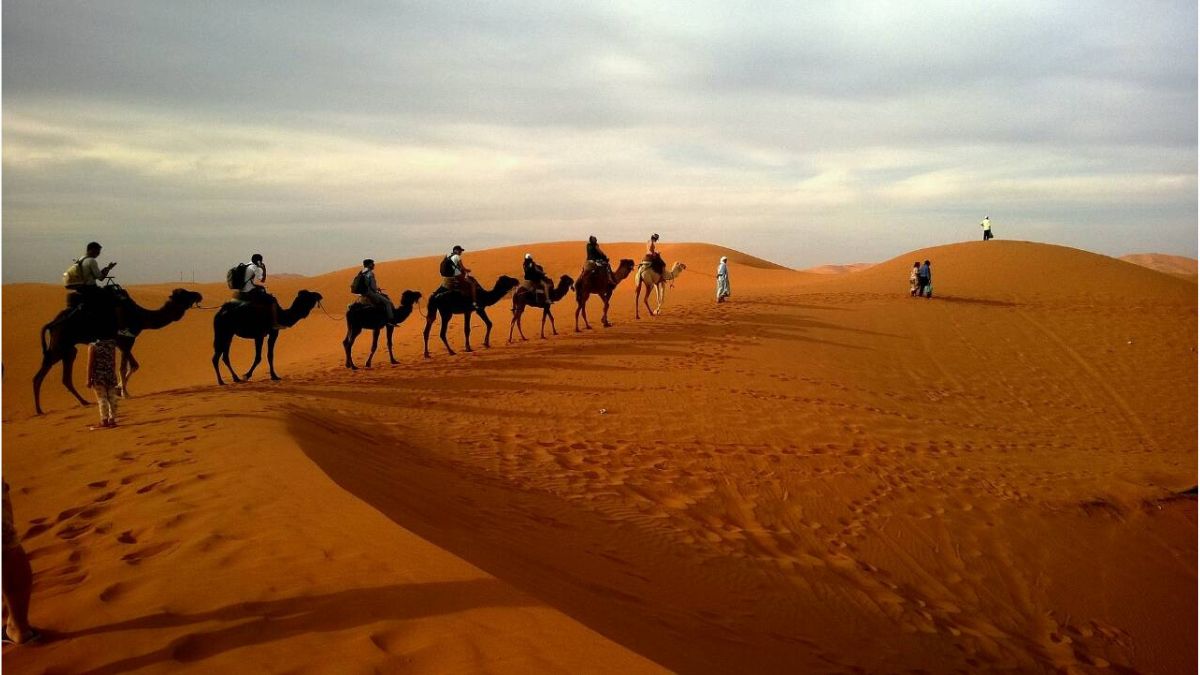The Biggest Desert of Pakistan, the Cholistan Desert, spans approximately 26,000 square kilometers in the southern Punjab region. Often overlooked, this vast desert—also known as Rohi—offers a compelling combination of history, culture, natural beauty, and economic potential. It is an extension of the Thar Desert and a vital part of Pakistan’s geographical identity.
Where is the Biggest Desert of Pakistan Located?
The Cholistan Desert is located in southern Punjab, starting about 30 km from Bahawalpur. It stretches across the districts of:
- Bahawalpur
- Bahawalnagar
- Rahim Yar Khan
Geographically, the Cholistan connects with the Thar Desert in India, forming a part of the larger Indus Basin. The landscape features rolling sand dunes, dry riverbeds, and sparse vegetation.
Climate of the Cholistan Desert
As the biggest desert in Pakistan, Cholistan experiences a harsh arid climate:
- Summer temperatures exceed 50°C
- Winter temperatures drop to 0–5°C
- Average rainfall is just 100–180 mm annually
- Frequent droughts and strong winds cause sand dune shifting
These extreme weather conditions impact local communities, agriculture, and desert biodiversity.
Historical Significance of the Cholistan Desert
Cholistan holds deep historical roots dating back to the Indus Valley Civilization. The now-extinct Hakra River once flowed through the region, supporting ancient settlements.
Key facts:
- Over 400 archaeological sites discovered
- Evidence of Harappan culture and early trade
- Formerly part of trade routes linking Central Asia and South Asia
Derawar Fort – Icon of the Cholistan Desert
Standing as a symbol of royal heritage, Derawar Fort is located deep within the Cholistan Desert. Originally built in the 9th century and rebuilt in the 18th century by Nawab Sadeq Mohammad Khan I, it features:
- 40 high bastions
- Massive clay brick architecture
- Strategic importance during the Bahawalpur State era
The fort is a popular site during the annual Cholistan Desert Jeep Rally.
Flora and Fauna in Pakistan’s Biggest Desert
Despite its arid environment, Cholistan supports unique desert life.
Flora:
- Bushes like kair, phog, and thorny grasses
Fauna:
- Camels, wild cats, jackals, and reptiles
- Migratory birds such as cranes and partridges
- Endangered species including Chinkara deer
The desert ecosystem is fragile yet biologically significant.
People and Culture of Cholistan
The tribes of Cholistan include:
- Cholistani
- Arain
- Jat
- Rai
Most are nomadic or semi-nomadic, relying on:
- Livestock herding (camels, goats, cattle)
- Traditional handicrafts and embroidery
- Limited farming in irrigated areas
Their rich culture features folk music, colorful attire, and oral storytelling passed through generations.
Read More: Rare Asiatic Desert Big Cat Found in D G Khan Sulaiman Range
Economy of the Cholistan Desert
The economy of Pakistan’s biggest desert is based on:
- Livestock (over 1.5 million animals)
- Handicrafts and camel leather products
- Seasonal grazing due to climate patterns
Water scarcity limits agricultural development, though some areas benefit from canal irrigation.
Water Supply and Challenges
A key issue in Cholistan is the lack of freshwater. The desert depends on:
- Rainwater collection ponds (tobas)
- Tube wells and deep boring
- Water tankers in dry seasons
Challenges include:
- Poverty and poor infrastructure
- Limited healthcare and education
- Migration due to drought and climate change
Development projects aim to provide solar water pumps, schools, and medical access.
Tourism in the Cholistan Desert
The biggest desert of Pakistan has become a growing tourism destination, attracting locals and foreigners to:
- Derawar Fort
- Abbasi Mosque
- Royal Nawab Tombs
- Camel rides, desert camping, and cultural tours
The Cholistan Desert Jeep Rally, organized by TDCP, is a flagship event promoting adventure tourism and local crafts.
Strategic Importance
Due to its proximity to the Pakistan-India border, Cholistan holds strategic military importance. The region hosts:
- Border security checkposts
- Military training activities
- Infrastructure projects for national security
Read More: Thar Desert Train Safari: Ticket Prices & Key Details
Conclusion
The Cholistan Desert stands as the biggest desert of Pakistan, representing a blend of ancient history, living culture, ecological diversity, and tourism potential. While it faces major environmental and socioeconomic challenges, ongoing efforts are helping to preserve its cultural identity and promote sustainable development. Whether you’re a traveler, historian, or conservationist, Cholistan is a destination worth exploring. Stay tuned with Bloom Pakistan









